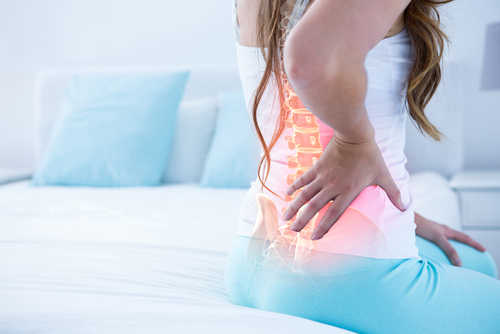
Also referred to as coccyx, tailbone is the bone located at the rare end of the spine. It is possible to injure your tailbone during a direct blow or a seated fall. Although the area around your tailbone may be bruised, there are times when it can fracture causing extreme or unbearable pain. A fractured tailbone can be very painful and may take a very long time to heal.
If you are experiencing unexplained discomfort around the coccyx or you have signs and symptoms of an injury, you may be wondering what steps you can take to address the issue. This article discusses whether it is necessary to go to an urgent care center if you fell on your tailbone.
The Severity of a Tailbone Injury
Most injuries around the coccyx area lead to bruising and pain. It is only in rare cases that you may encounter a broken or fractured bone. Falling backward onto a hard surface such as ice or a slippery floor is one of the common causes of tailbone injuries. Some of the symptoms of injury may include pain in the lower back, numbness with sitting and swelling around the base of the spine.
Is Visiting Urgent Care Necessary?
An urgent care center is meant to treat patients with non-emergency but pressing medical issues. Patients can seek medical treatment outside the regular doctor’s office hours. Tailbone injuries rarely require a visit to an urgent care center because they can be treated at home. However, if you are experiencing unexplained discomfort or extreme pain that does not seem to fade away then it might be necessary to visit urgent care.
If you have fallen accidentally on your back, consider doing a self-assessment before you quickly get up. Although most bruises and bumps on your tailbone do not require medical attention, extreme signs and symptoms such as strains, sprains, and fractures need to be treated at certified urgent care. Some of the reasons to visit urgent care are when you are unable to move an upper extremity without feeling pain or your pain persists for a very long time despite self-care and treatment at home.
What to Expect When Visiting an Urgent Care
A healthcare provider will do a thorough examination of your tailbone region. They conduct the diagnosis by pressing on the area gently and other series of physical tests to determine the severity of your condition. An X-ray may be performed on your lower back to assess the extent of the injury. If there is no sign of fracture, you will be given medicine to alleviate your symptoms. Since it is quite difficult to hold together a fractured tailbone, the treatment focuses on easing discomfort while the injury continues to heal. Icing your injury for a day or two can help relieve pain and swelling. Your physician may recommend a special pillow or cushion to protect your tailbone when sitting or sleeping. If you do not respond well to the above treatments, then your doctor may recommend surgery for a traumatic coccyx injury.
Can I Treat My Symptoms at Home?
Your health care provider will provide instructions on how to relieve your symptoms from home. It is important to follow these steps for the first few days or weeks following your injury. Try to rest and stop any physical activities that might cause pain because your body heals faster the more you rest. While awake, ice your tailbone for 20 minutes every hour for the first 2 days then do it two to three times a day. Use a special cushion recommended by your physician to take the pressure off your tailbone. It is important to avoid sitting a lot as it exerts a lot of pressure on your coccyx region.
The best resting position is to lie on your belly or according to your doctor’s recommendation. Talk with your healthcare provider before you use any non-prescription drugs for pain. Some of these drugs can have negative side effects if you have an underlying health condition such as heart disease, stomach ulcers, or high blood pressure. Most importantly, never take more drugs than what is recommended by your physician.
You can begin light physical activity such as sitting or walking as your pain goes away. Try to avoid sitting for long periods especially on a hard surface, and use your special cushion to ease tension on your lower back. It is important to follow up with your health care provider to assess your healing progress and incorporate new lifestyle changes that take the pressure off your tailbone.
